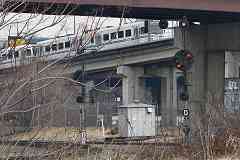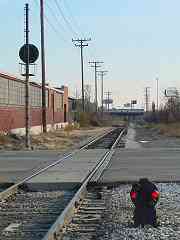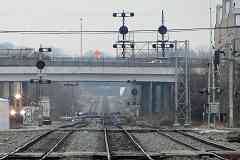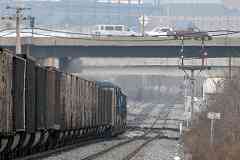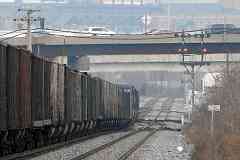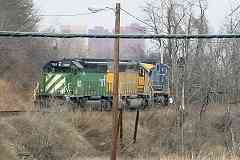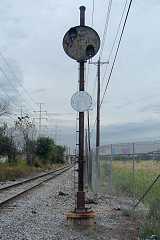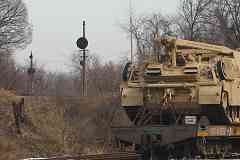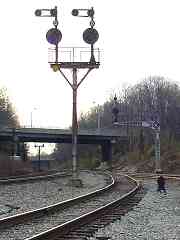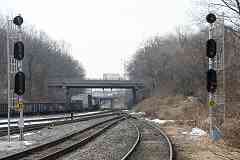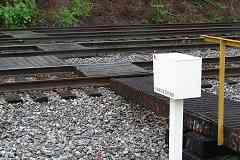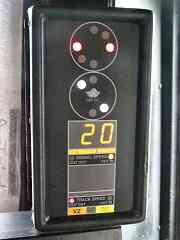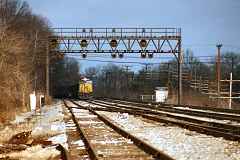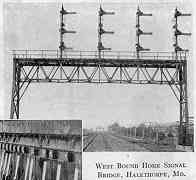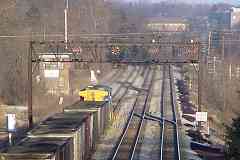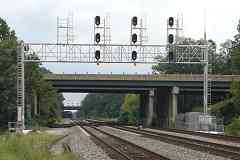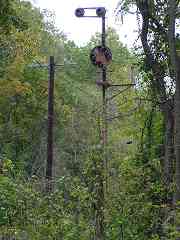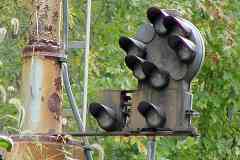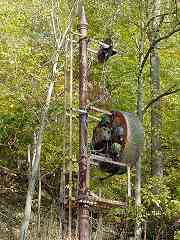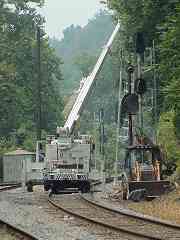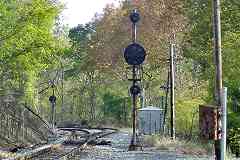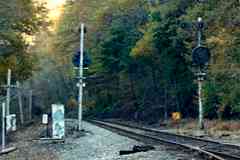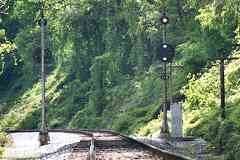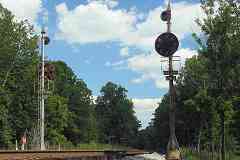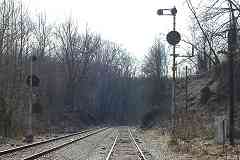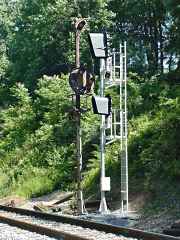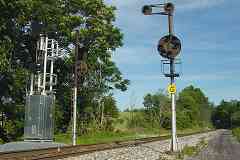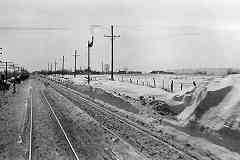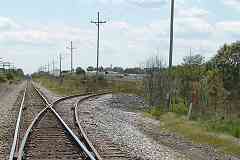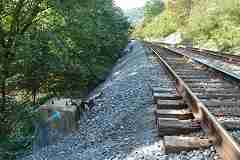|
A CPL consists of a circular, fixed black disk, or signal head, containing up to 8 lamps.
The most common CPL configuration, such as the two seen here at Bailey's Wye in Baltimore,
has six lamps on the signal head plus at least one marker lamp above and/or below.
Rather than marker, some people favor the term orbital.
The signal head does not rotate, instead pairs of lamps are illuminated to represent 3
basic instructions: go, stop, or go slow. Each such pairing is called an aspect. The
top and bottom lamps display green for "clear" (go), the left and right display red for
"stop", and the ones illuminated in this photo display amber for "approach" (slow).
There is redundancy in the system: though in this photo the amber looks red, since the
illuminated lamps are the / diagonal pair can we know it depicts "approach" rather than
"stop". The vertical, horizontal and diagonal pairings mimic the arm angles of the
semaphore-style signals that preceded the CPLs.
Link:
same signal ~1977
|
